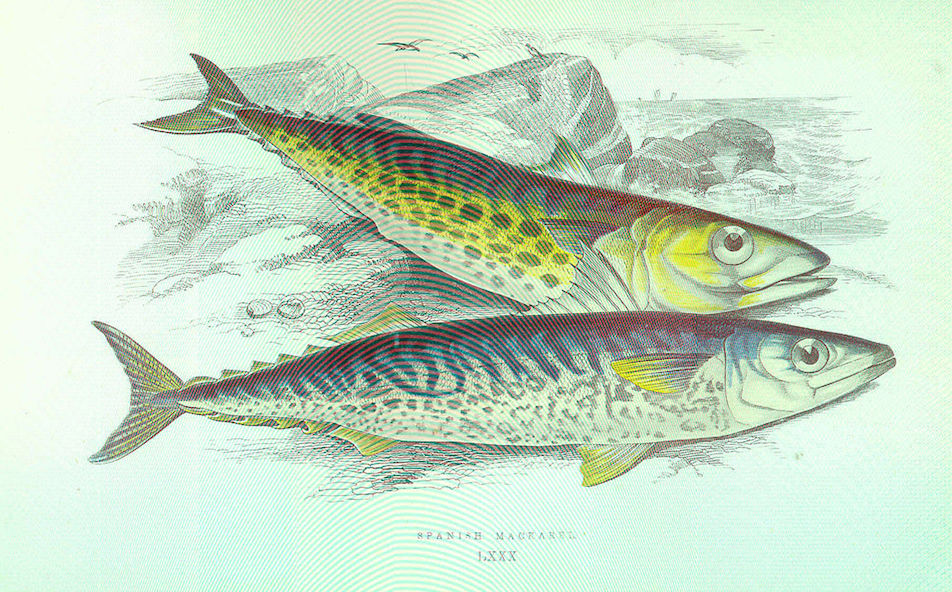
A 19th century image of Spanish mackerel
By Melissa Gaskill
Texas Climate News
Fish species are sensitive to water temperature and, as climate change warms ocean waters, their geographic distribution is changing. A study recently published in the journal PLOS ONE projects some fish species off the United States’ coasts shifting northward to more suitable temperature ranges under future climate scenarios.
The effect on species in the Gulf of Mexico is mixed, according to one of the authors, James Morley of Rutgers University-New Brunswick.
“Roughly half of the species might see some benefits from increased temperatures, the other half negative impacts,” Morley says.
For tropical, reef-associated species, such as red snapper and red porgy, the study projects an increase in habitat suitability in the Gulf. “But we project a number of species will lose suitable habitat under a high-emissions scenario. Spanish mackerel, for example, may see a 27 to 51 percent decline of suitable habitat and move into deeper waters.”
Habitat change is already occurring on the Texas coast, reports Greg Stunz, chair of Fisheries and Ocean Health at the Harte Research Institute for Gulf of Mexico Studies at Texas A&M University Corpus Christi.
“We see black mangroves moving north, displacing cordgrass marsh. We don’t really know the impact that habitat change has on fish.”
Stunz also has seen some northward movement of fish populations in the Gulf, including mangrove or gray snapper.
“The general take-home of the paper is that fisheries management has traditionally been conducted under this equilibrium principle,” Morley says. “We recognize a lot of year-to-year variability, but don’t assume any general change in productivity of a stock over time. Our projections show that frame of mind needs to change. We need to anticipate changes in these stocks, shifts into deeper waters, and reduced productivity of some stocks as temperatures become less suitable.”
He notes a “huge difference” in projections under low- versus high-emissions scenarios for releases of greenhouse gases by human activities. Strong mitigation efforts consistent with the Paris Climate Agreement for major emissions cuts would likely mean substantially smaller fish shifts, while many U.S. species shifted more than 620 miles under the high-emissions scenario.
The study authors based their projections on 16 different climate models and stock-assessment data from the National Oceanic and Atmospheric Administration. NOAA and Pew Charitable Trusts funded the work.
According to NOAA, marine and coastal fisheries support more than $200 billion in economic activity and 1.8 million jobs in the U.S. each year. In Texas, saltwater recreational anglers contribute nearly $2 billion to the economy annually, and Texas commercial fisheries had sales of more than $195 million in 2016.
+++++
Melissa Gaskill, an independent journalist based in Austin, is a Texas Climate News contributing editor.
